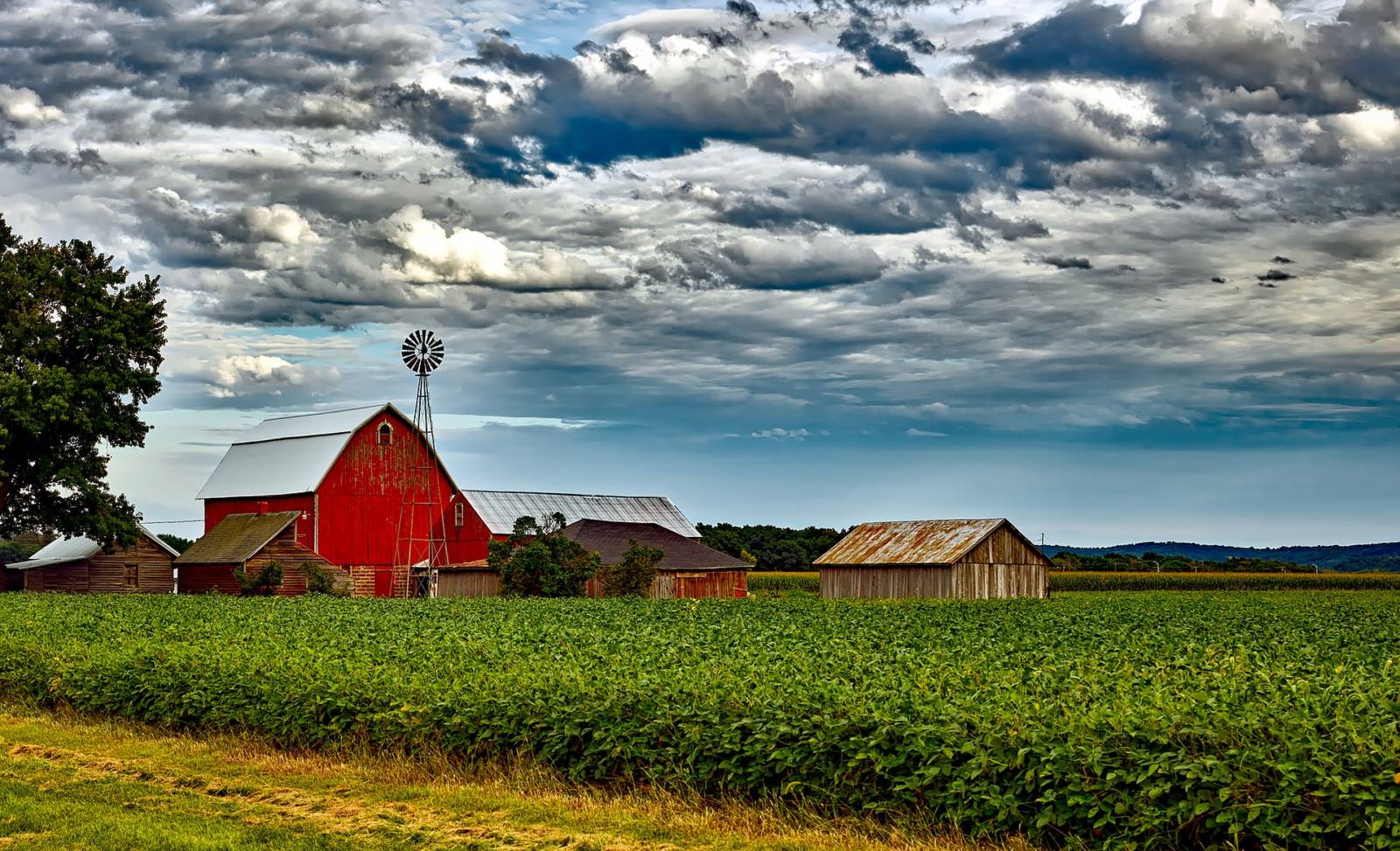Soy contributes to countless food, feed and fuel products. From high-protein animal feed and cleaner-burning biodiesel to versatile vegetable oil and soy lecithin, soy delivers desired qualities and proven sustainability for a variety of industries.
Soybean farmers’ commitment to continuous improvements on their farms aggregates through the supply chain to deliver sustainable products to customers.
“Every move we make to manage our resources — land, water, nutrients and more — hinges on being both sustainable and profitable,” says Belinda Burrier, a soybean producer and soy checkoff farmer-leader from Union Bridge, Maryland. “That allows us to stay in business. Farmers were focused on sustainability before the term was commonly used. We’ve been improving all along.”
In addition to on-farm efforts, soybean farmers collectively invest a portion of their revenue to fund key industry objectives through the soy checkoff. Meeting customers’ requirements for both quality and sustainability are priorities for this collective investment.
“The soy checkoff focuses on research to meet customer needs and requests, while educating farmers and the value chain about continuous improvement,” Burrier says. “For global customers, the checkoff helped create the U.S. Soybean Sustainability Assurance Protocol, or SSAP, that verifies the sustainability of our soy products.”
The global food value chain relies on the Sustainable Agriculture Initiative (SAI) Platform to define and ensure a sustainable, thriving, resilient agriculture industry to deliver raw materials. It covers environmental, economic and social factors. The soy industry demonstrates compliance through the SSAP and Field to Market, an agricultural supply chain alliance focused on similar goals. Both these programs use U.S. Department of Agriculture (USDA) data to measure sustainability progress.
Making Continuous Environmental Improvements
Based on existing aggregated national data from conservation programs, the SSAP quantifies reductions in carbon emissions, energy use, greenhouse gas emissions and soil erosion, all per soybean acre and soybean bushel. According to the U.S. Soybean Export Council, 95 percent of U.S. farms currently participate in the program and meet the sustainability criteria.
Field to Market analysis of USDA data shows that since 1980, soybean farmers have:
- Decreased soil erosion per acre by 47 percent.
- Reduced irrigation water use per bushel by about 32 percent.
- Cut energy use per bushel by 35 percent.
In addition, Field to Market has been pilot-testing a biodiversity metric to monitor the ability of land to support a diverse ecosystem.
Burrier’s investments in management practices have improved sustainability on her family’s farm.
- No-till manages crops without disturbing fields and encourages healthy soil.
- Cover crops keep vegetation on the ground throughout the year to keep the soil in place.
- Grass waterways and buffer strips filter water that leaves the farm, keeping nutrients on the field.
“We have a creek that runs through some of our land,” she says. “A couple years ago, the water was tested monthly as it entered and left our land, and we learned that it actually leaves our farm cleaner than it arrives. We aren’t adding anything to it — and that’s our goal.”
Supporting economic efficiencies
While soybean farmers are reducing environmental impacts, they’ve also been increasing yields — growing more with less. And the overall financial health of U.S. agriculture has improved in the past 20 years, benefiting everyone. Agriculture’s contribution to the national GDP has increased 30 percent, according to the Field to Market.
Technology plays a key role in improving efficiency. “We use layers of data to ensure we use just the inputs we need for optimum yield each season and long-term sustainability,” Burrier says. “GPS allows us to place inputs within half an inch of where they are needed. Yield data, soil grid samples and crop tissue samples all influence our nutrient management plan, and we essentially spoon-feed nutrients to crops, providing just what they need when they need it, to avoid wasting resources.”
The SAI Platform includes global market access. Efforts like the SSAP deliver sustainable soy products to global markets. Burrier has visited customers in Asia and Europe and notes that they are very interested in U.S. farming practices.
“Others around the world want to understand our practices and follow our example,” she says.
Encouraging social responsibility
The third category in the SAI Platform links to the social well-being of farmers and rural communities. These objectives relate to labor and community contributions.
According to the Field to Market review of data from the Bureau of Labor Statistics, work safety on U.S. farms has improved since 1995, with 40 percent fewer injuries and 86 percent fewer lost workdays on crop farms. At the same time, the Field to Market study looked at USDA data to determine that the hours needed to produce a bushel of soybean decreased 77 percent, improving labor productivity.
Burrier notes that the soy checkoff invests in developing uses for soy that support rural communities and improve sustainability for other industries.
“We’re good at growing a reliable, sustainable supply of soybeans that benefits many industries,” she says. “For example, biodiesel is a renewable fuel with lower greenhouse gas emissions, providing an option for cleaner-burning fuel.” Additionally, biodiesel plants bring jobs and revenue to rural towns.
Developing new uses for soy allow additional industries to take advantage of the renewable, sustainable resource. “Soy-based tires are a recent example of a new way to incorporate soy, and I heard of one dealership interested in offering those tires exclusively,” Burrier says.
Both direct on-farm investments like no-till equipment and checkoff efforts demonstrate soybean farmers’ commitment to sustainability.
“Although as farmers we aren’t always aware that we are sustainable, it’s engrained in our business,” Burrier says. “We are often ahead of criteria without realizing it. We deliver sustainable outcomes for our customers.”
